B2B influencer marketing on LinkedIn is gaining serious traction, as new data reveals that businesses are increasingly turning to industry experts to build trust and visibility among professional audiences.
According to LinkedIn, 59% of tech buyers already consume influencer content on the platform, while research from Ogilvy shows 75% of B2B brands are already leveraging influencers – and 93% of CMOs plan to invest more in such partnerships. In response, a growing number of creators are utilising it as their primary content platform, bringing with them a more credible, expertise-led style of influence compared to traditional B2C creators on Instagram or TikTok.
A new report by The Influencer Marketing Factory offers the most comprehensive look yet at how the LinkedIn creator economy is evolving. The agency analysed more than 64,000 U.S.-based LinkedIn creators and surveyed over two dozen top voices and marketing leaders to uncover the strategies, trends and content formats shaping B2B influencer marketing.
How LinkedIn influencers stand apart
Unlike their B2C counterparts, B2B influencers on LinkedIn rely heavily on thought leadership, niche industry insights, and practical value for working professionals. Rather than chasing viral trends, they focus on shareable and community-relevant content that sparks meaningful engagement. LinkedIn’s algorithm, which prioritises posts that receive interaction from a viewer’s connections, further encourages this network-driven approach to content amplification.
What the data shows
The Influencer Marketing Factory’s analysis of creators with over 3,000 followers found that Business and Entrepreneurship is the most popular niche (15.6%), followed by Tech and Innovation (6.2%) and Sales and Marketing (4.1%). Most LinkedIn creators still have modest follower bases: 19% fall in the 5,000–10,000 follower range, while only 16% have between 10,000 and 30,000 followers.
Engagement levels are generally low, with over 70% of creators averaging a 0–1% engagement rate, suggesting that while the platform supports targeted reach, content must work harder to stand out.
What’s trending among B2B creators
Among LinkedIn’s top 100 B2B creators—ranked by influence and reach—image posts are the most common format, accounting for 43.7% of content, followed by video (27.7%) and text (20.3%). The gender split remains lopsided, with nearly three-quarters of the top 100 creators being male, suggesting room for more diversity in the B2B creator space.
Geographically, the landscape remains US-dominated, with 68% of top creators based in the United States. The UK accounts for 11.5%, while India represents 6.3%.
Sponsored content and brand sentiment
Sponsored content on LinkedIn is still a relatively small part of the mix, with just 4.5% of influencer posts containing paid promotions, based on an analysis of nearly 200 influencer marketing posts from 74 creators. However, those posts generate overwhelmingly positive sentiment—73% of comments were categorised as “very positive,” reinforcing the value of authentic, credible brand partnerships on the platform.
As B2B buyers increasingly seek advice and insights from peers and experts they trust, LinkedIn’s influencer community is emerging as a powerful alternative to more traditional ad strategies. With marketers under pressure to drive results in saturated markets, tapping into the credibility and reach of LinkedIn creators could prove to be one of the smartest moves in the B2B playbook.
Want the latest B2B marketing news straight to your inbox? Subscribe to our free weekly newsletter!


 Whether you want to learn how to use LinkedIn, X or Facebook for marketing, or need to brush up on business skills like leadership, presentation skills or managing meetings, you will find something to enhance your professional skills with these on-demand courses.
Whether you want to learn how to use LinkedIn, X or Facebook for marketing, or need to brush up on business skills like leadership, presentation skills or managing meetings, you will find something to enhance your professional skills with these on-demand courses.